Say what you want about Vietnamese food, but it’s hard to deny its uniqueness and special appeal.
Even in a dish like ca kho to, which is a fairly everyday dish from the South, what you see (and what you get) is a diversity of ingredients exquisitely cooked in unpretentious, simple but really effective ways.
And yet it’s still but the tip of the iceberg for this culinary excursion. This particular braised fish is more indicative of the southern style, though there are entirely other culinary worlds up and around the Vietnamese countryside as well.

Ca Kho To, The Han Dynasty, Champa, and Regional Variance
To start diving into what’s shaped Vietnamese cuisine as it is today, we’ll start with perhaps the greatest influence on the cuisine across all three of its major food regions: the Chinese.
Nam Việt and the Chinese Dominance
Up until the founding of the Triệu dynasty in the 3rd century BC, the lands of Vietnam were inhabited by fairly autonomous and independent Austronesian ethnic groups separate from their neighbors, the Chinese. The dynasties prior to the Triệu successfully united these diverse ethnic groups under one common political identity, but it was one more in co-existence with the Chinese than under control.
The Triệu dynasty changed all of that. While a fairly short lived dynasty of only about ~100 years, the Triệu – founded and led by a defected Chinese military commander – conquered and developed a large expanse of land across modern-day North Vietnam and the Guangxi province of South China to create the Kingdom of Nam Viet. The King of Nam Viet, Triệu Đà, fairly audaciously proclaimed himself an equal to his “peer” up North, the emperor of the Chinese Han dynasty.
By 111 BC, the Han made it clear who was the domineering power in the region as they invaded and effectively ended the Triệu reign. What resulted from this invasion was a millennium of Chinese rule over the lands of Nam Viet.
Each successive Chinese dynasty, with a few exceptions, effectively quashed any attempts at independence staged by the Vietnamese. The Vietnamese finally succeeded in the 10th century and once again became a free state, a designation they would enjoy for nearly another millennium again.
The Chinese being gone, however, didn’t imply smooth sailing for the Vietnamese and inhabitants of the Red River Delta. So long as Champa, the kingdom to the South, was still around, there would still be continual conflict and turmoil.
If you like this Ca Kho To, you might want to check out our other recipe on Vietnamese Goi Cuon, Vietnamese Mi Quang Soup, or Vietnamese Rice Cakes (Banh Chung)
The Kingdom of Champa
While those in the northern parts of contemporary Vietnam were under Chinese control, the peoples of South and Central Vietnam experienced an entirely different sort of lifestyle.
Unfortunately, the only reliable references to the Cham period are the written records (note: secondary sources) of the Chinese and Vietnamese experiences with the Cham people. Nevertheless, there’s enough to paint a fairly decent picture about the kingdom itself.
The kingdom of Champa was founded in the late 2nd century AD in the modern-day city of Hue, when a local leader rebelled against the Han dynasty. As successful as the Han were in the north at quelling rebellion and dissidence, the Han were pretty ineffective in trying to retake the Kingdom of Champa as their own.
As its own Kingdom, the Cham people developed relations with peoples away from the Chinese, most notably the Indians. By the 4th century AD, the Kingdom of Champa had become Indianized, and Sanskrit and Hinduism officially became the dominant language and religion, respectively.
At its peak between the 7th and 10th centuries, Champa reached its peak and dominated the trade routes between the Chinese, the Indians, the Indonesian islands and everything in between. By the time the Northern kingdom of Viet Nam gained independence from the Han, however, they soon eroded this dominance by invading Champa and clashing with the Cham.
Before its decline and eventual annexation into Viet Nam, it’s interesting to point out one relationship the Cham had with another one of its neighbors: the Khmers. Much of the developmental arc for both the Cham and Khmer cultures are nearly parallel to one another, and there seems to have been a fair amount of competition – both economic and military – between the two over the centuries.
With the collapse of Champa, many Cham people would migrate into the land of the Khmers (modern day Cambodia), though some would eventually re-settle back into Vietnam.
Impact on Regional Cuisines
It’s fair to say that the different histories, cultures and ethnicities have played a large part in the starkly different regional cuisines that have developed in modern day Vietnam. To make things all the more complex, we’re going to also add climate and agricultural differences into the mix as well.
The Vietnamese cuisine can be broadly split among its three different regions: the North, the Center and the South.
Generally, Northern Vietnamese cuisine is most closely linked to that of traditional Chinese cuisine. The cooking is overall more “conservative” and is less spicy than elsewhere in the country, and there are a large proportion of stir-fried and noodle-based dishes.
The center of Vietnam, on the other hand, has a slightly more decorated and sophisticated feel to it. The city of Hue served as the imperial capital during the Nguyễn dynasty between the 19th and early 20th centuries, where the royal chefs of the court experimented and developed more elaborate dishes than the traditional Vietnamese cuisine. Compared to the north, central Vietnam has more earthier and spicier types of dishes.
Finally, there’s the South, where ca kho to is best known. One of the starkest characteristics of Southern Vietnamese cuisine is its tropical feel. Partly because of the tropical climate’s influence on local agriculture (like coconut groves) as well as the prevailing Indian cultural presence from the days of Champa, southern Vietnamese food – like we’ll see with ca kho to – is considerably sweeter and has a far wider spectrum of balanced sweet/salty flavors to it, with a kick of heat. In any given meal, you might see anything from the very spicy to the calmly sweet in one bite.
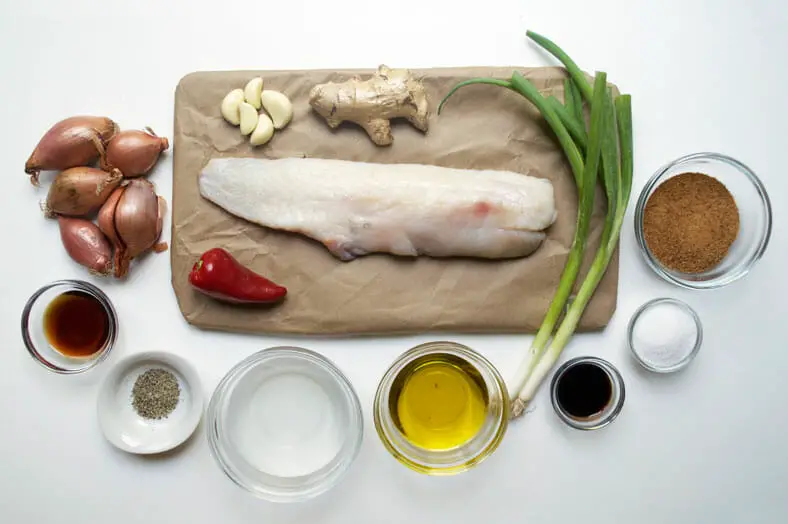
About the Recipe
A decidedly southern dish in style, ca kho to is a smooth, caramelized braised fish slowly and passively cooked in a clay pot to better retain heat and help with the caramelization process.
Translating the dishes name helps to give us some insight as to what we’re going to do today with this recipe. The word cá in Vietnamese means fish, which is simple enough. Tộ refers to the clay pot in which the dish is commonly prepared in… which brings us to kho.
Although this dish is meant to be eaten with a good bowl of white rice, you can also try it fried plaintains instead. Costa Rican cuisines and a lot of African cuisines serve fried plantains as a side to fried, grilled, and all types of dishes with fish as the main course. It’s easier than it sounds, and hey, nobody said you can’t have both white rice and fried plantains with your fish!
The Art of Kho
Kho is a method intent on keeping the muscle tissue cells of your protein moisturized during the cooking process. Whereas most drier methods (think sautéing) will cause the protein to release water and tighten up, the art of kho is to keep the protein in an environment where osmosis favors water going in, not out.
One of the keys to kho is to cook everything extremely passively and on a low simmer. In the case of ca kho to, once you’ve set your filets and submerged them in their marinade, you simply let it sit and simmer until it has braised to a moist, meaty texture.
Preparation
To make your ca kho to, start by marinating your thicker fish filets. In Vietnamese cooking, there’s a sort of ying-yang ideal to combining ingredients, except that there are “hot” ingredients and “cold” ingredients that are intended to bring the body into balance.
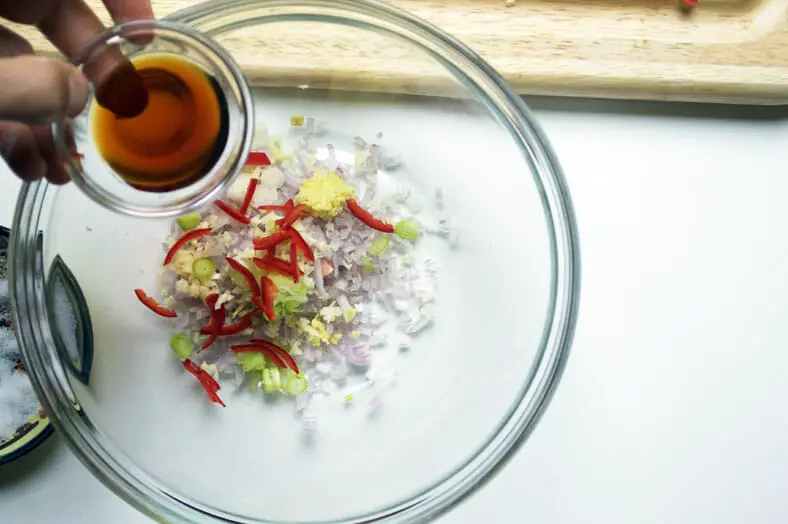
Fish, for the most part, is considered a “cold” ingredient and thus needs to be balanced with “hotter” ingredients like garlic, shallots, chilis and more. Most traditional recipes of ca kho to will use a type of saltwater snakehead fish – or catfish equivalent – commonly found in the rivers there, although you can substitute in (like we did) any other types of meatier fish here as well.
To create the marinade, take some garlic, shallots, chilis and some nước mắm, a type of fermented fish sauce that is prevalent in all Vietnamese cooking. Failing that, you take regular fish sauce as a substitute into your marinade, which sits on the fish for up to 30 minutes.
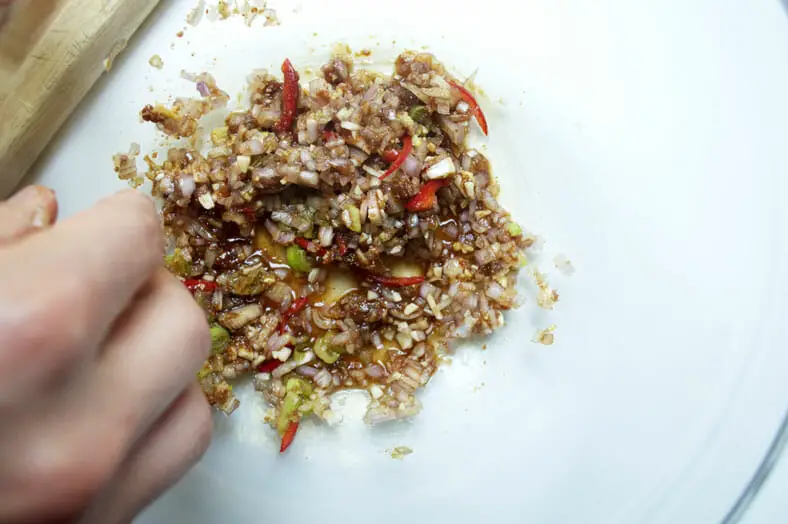

From there, you’ll start by taking your pot over medium heat and adding in some oil. It’s important to note here that while the clay pot is most traditional (and versatile) to use here, you can use any other type of pot here. The clay pot does, however, do a much more effective job and tempering the heat and keeping your ca kho to cooking at a steadier pace. If you can, we’d recommend using a clay pot if you have one.
Lightly brown some other “hot” ingredients like ginger and lemongrass before lowering the heat. At this point, you’ll add and layer in your marinated fish, after which you’ll pour the remaining marinade on top along with some sweet coconut water and caramel sauce (optional) to submerge the fish.
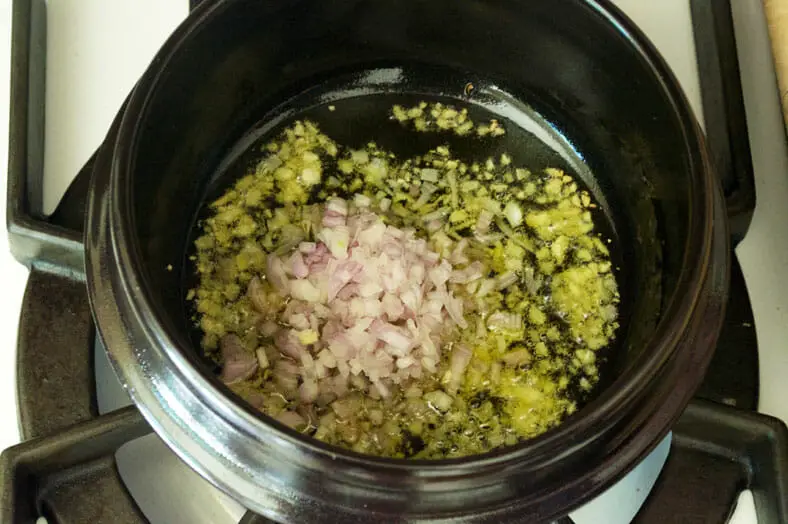
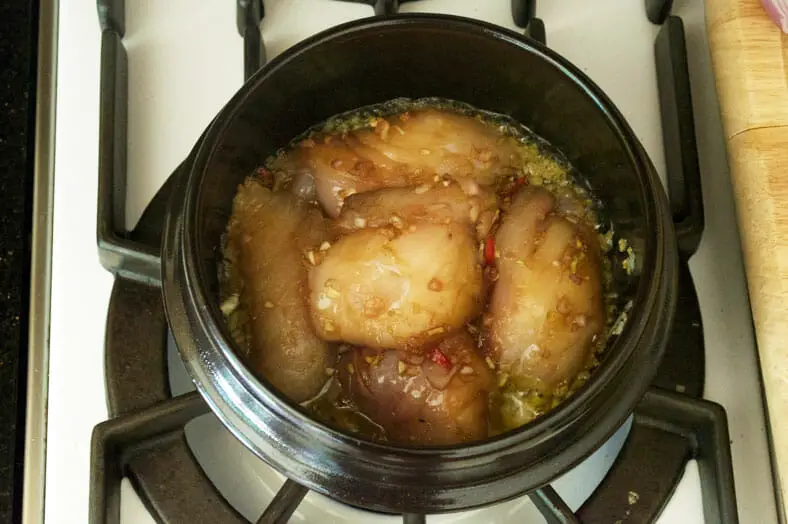

Depending on your preference, some recipes might suggest making a quick caramel to drizzle over your ca kho to and to add into the simmer. This is a very typically southern element to add to your dish, and it’s definitely optional. To heat up some sugar with a dash of water in a small pan, however, only takes a few minutes, and it definitely adds a rich, dark color and alluringly sweet taste to your final ca kho to.

Once you’ve added your fish, caramel and any submerging liquid, simply let it sit and cook for around 30 minutes. At the halfway mark, you might want to very gently flip your fish filets over, but other than that, you’re done!
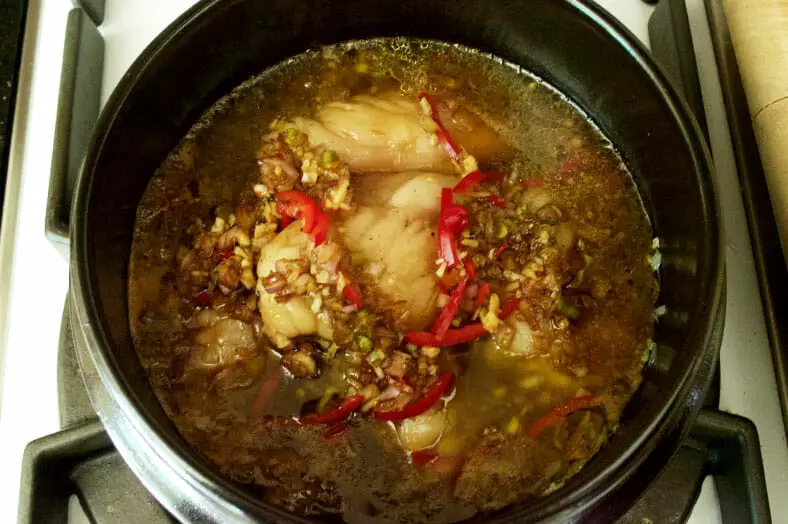
Our Take on the Recipe
There were a lot of great recipes to choose from, but there was one recipe (and overall insight) that we particularly liked for this dish, so we decided to base our own ca kho to based off this original reference from Hungry Huy. Nevertheless, there were a few adjustments we wanted to make to ours.
For starters, we used a different type of fish altogether. While catfish is apparently the most closely related type of fish to the more common snakefish, we preferred this recipe with another type of meaty white fish: the monkfish. In the end, we just found that it came out juicier and more “kho-like” than when we tried it with catfish.
One thing we noted in a lot of other recipes but more surprisingly not in our resource was the pre-marinating of the fish in “hot” ingredients. It was something that we found gives the fish some added flavor before the braising itself, so we added in the fish-sauce based marinate that you see in the recipe below.
Another thing we added in – although we kept it optional – was the caramel. You could really go either way with this one, but we personally preferred making a very quick caramel out of coconut sugar to add into our ca kho to. It made a significant enough difference for us to at least include it for you, and from here you can decide whether or not it’s for you as well.
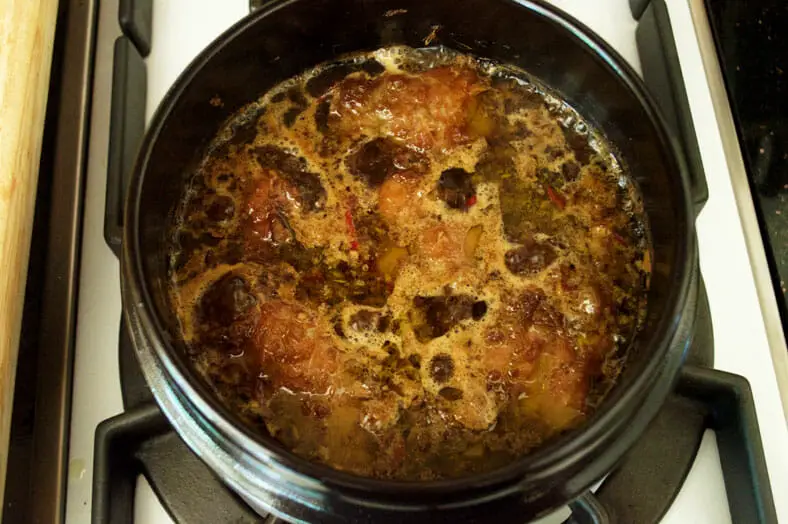
Finally, we added a few more “hot” and aromatic ingredients into the pot to add more flavor, seasoning and texture into the dish. It’s a minor change, but it was one that we think does give the dish some enhanced flavor and mouthfeel to it.
Other than that, this was a true joy to cook. It’s fun and as passive as it gets with the cooking itself, and the type of bite and flavor that results is so well worth it.
Enjoy!
How would you prepare your ca kho to? Comment below!
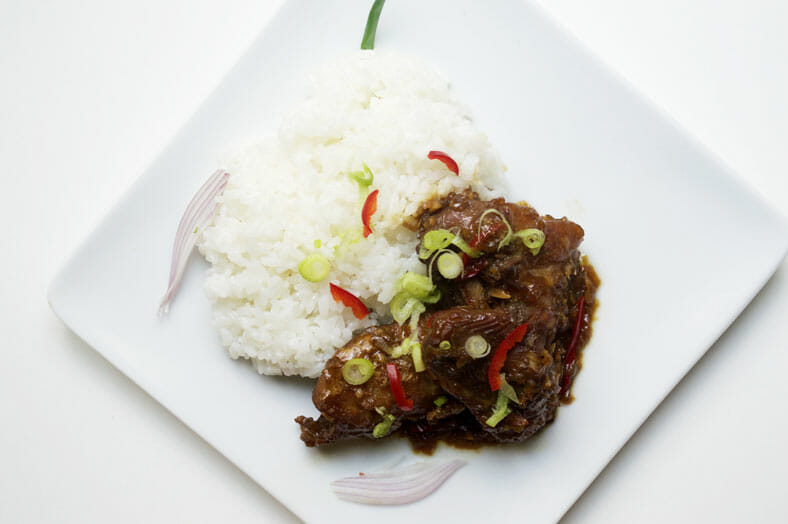
Food styled by: Phil Roepers

